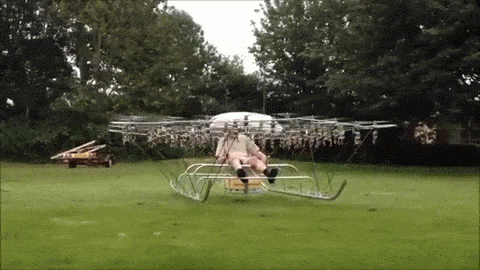In case you haven’t seen it yet, this video has been taking the internet by storm. The YouTube user [Gasturbine101] has successfully taken flight in his home made multi-rotor flying machine.
It’s a massive array of high powered brushless motors with props, fifty-four in fact, all counter-rotating. It has a weight of 148kg (we assume this includes the inventor), and produces a maximum lift of 164kg. Apparently it’ll even last for about 10 minutes. The props are grouped into six, using Hobbyking stabilizers to balance the flight.
He calls it the Swarm.
Continue reading “Being Picked Up By A Swarm Of Drones May Become Reality”

















